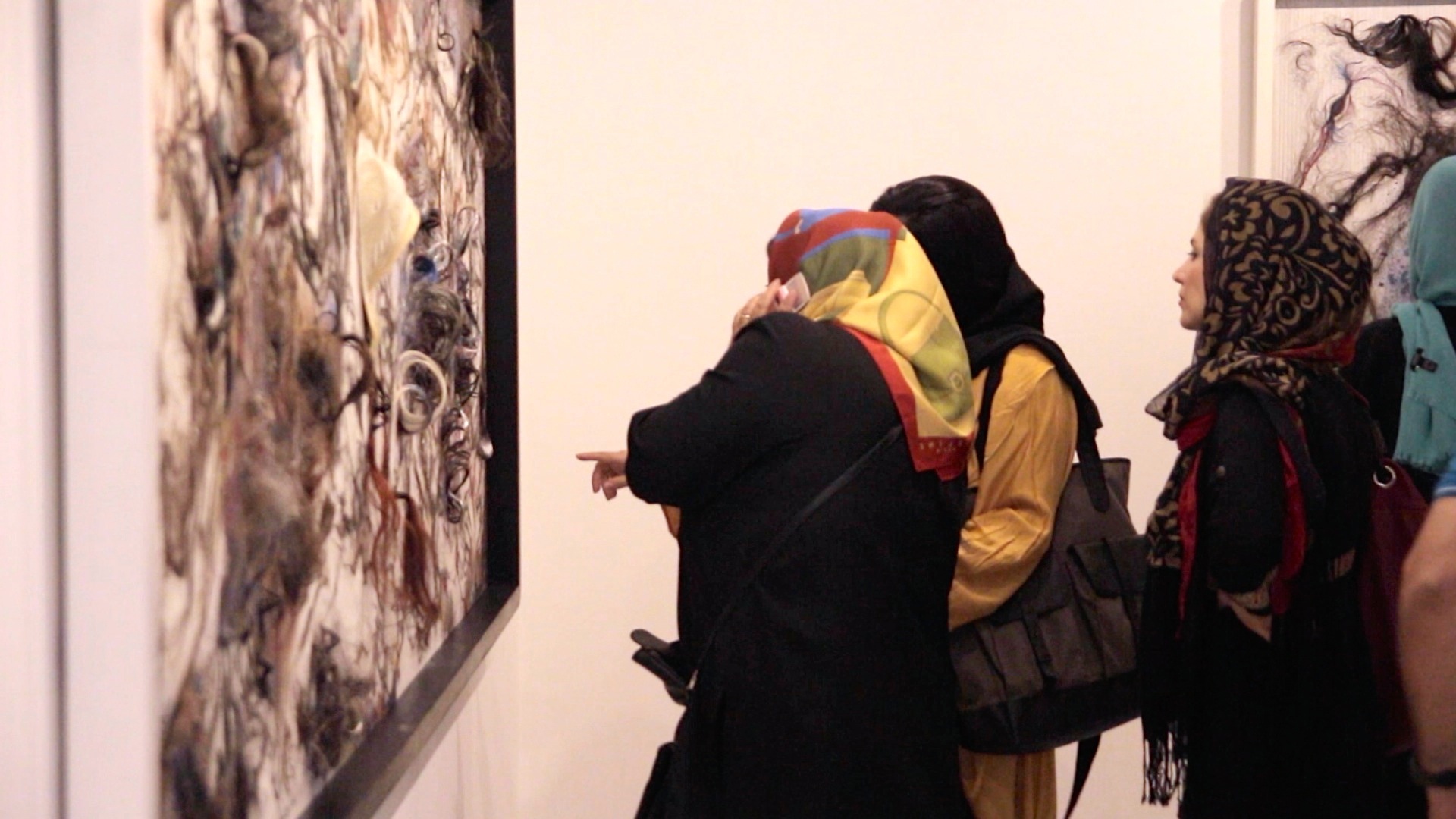The mission statement of the Tehran Auction–one of Iran’s largest annual art events–proudly refers to a phenomenon that may appear inexplicable in light of current world politics: “the increasing interest in modern and contemporary Iranian art.” In the run-up to this year’s auction, held on January 12th, Iranian artists and art-critics alike agreed that the supposed growth of interest in Iranian art was something of a bad joke, given the country’s strained relations with the large majority of the international community. Al Jazeera reported that, following the return of US sanctions, there was widespread expectation in the Iranian art community “that the sell-off would attract fewer and less enthusiastic buyers.”
The global art community read the auction proceedings the next day with astonishment; it had been an unbelievable success, bringing in approximately $8.1 million–more than doubling the sum of the 2018 auction–and setting a new earnings record for the event. Instead of discouraging engagement, global sanctions against Iran drew its artistic community an unprecedented degree of interest.
As 2019 bears witness to yet another year of crippling economic sanctions for the country and as the prospect of a regime shake-up looms larger on the horizon, a perverse interest in Iranian art seems to be taking shape. A day after the Tehran Auction, Al Jazeera ran a peculiar story on a small concert that had taken place in the northwestern Iranian city of Qazvin. On January 13th, Iranian music producer Saba Alizadeh held a music performance in an old dried-up reservoir outside the city. Entitled “Elegy to Water,” the concert was a comment upon Iran’s growing water scarcity crisis in its more rural regions.
Focusing almost entirely on eyewitness testimonies of the performance’s political sagacity and timeliness, the Al Jazeera article only casually mentioned the head count of the concert: 100 people; about half a decently-sized college auditorium. It seems unlikely that Al Jazeera would have found this story worthy of global attention if the concert had taken place in any of Iran’s less politically volatile neighbors, in which performances of 100 people or less surely occur daily. The Tehran Auction’s success and this small concert’s media attention suggest that Iran’s growing political and economic crises have encouraged an international interest in Iran’s cultural productions–however minute they might be.
This phenomenon is not confined within Iran’s borders. New York City just held the first ever “Iranian Film Festival in New York,” featuring famed Iranian director Bahman Farmanara–the only Iranian director able to attend the event under the current U.S. government travel restrictions. Similar to how the Tehran Art Auction billed itself as an answer to the growing demand for modern Iranian art, the Iranian Film Festival in New York sold itself as an opportunity to view the “new cutting-edge works that showcase the adventurousness and daring nature of younger Iranian directors.”
Though US-Iran relations are closer to a breaking point than they have been in the past few decades, a marked demand for Iranian cinema in the U.S. is growing. This interest in Iranian filmmaking is strikingly reminiscent of the vogue enjoyed by the nation’s pre-revolutionary cinema from 1950-1970, now considered the “classics” of Iranian film. Similar to today, the West was fascinated by the art of a country in the throes of political crisis.
The connection between Iran’s politics and interest in its art industry has undoubtedly begun to dawn on Iranian artists. Firouz Farman-Farmaian, an Iranian curator who fled Iran during the revolution and now runs a gallery in Spain, remarked in an interview that “as politics gets worse, we gain more public attention” and that the Iranian art market is now “paradoxically booming.” Iranian artists must find the apparent reason for their newfound success sobering, given its uncomfortable catch: in order for the boom to continue, so must Iran’s political precarity.
Photo: “Iranian Art“
